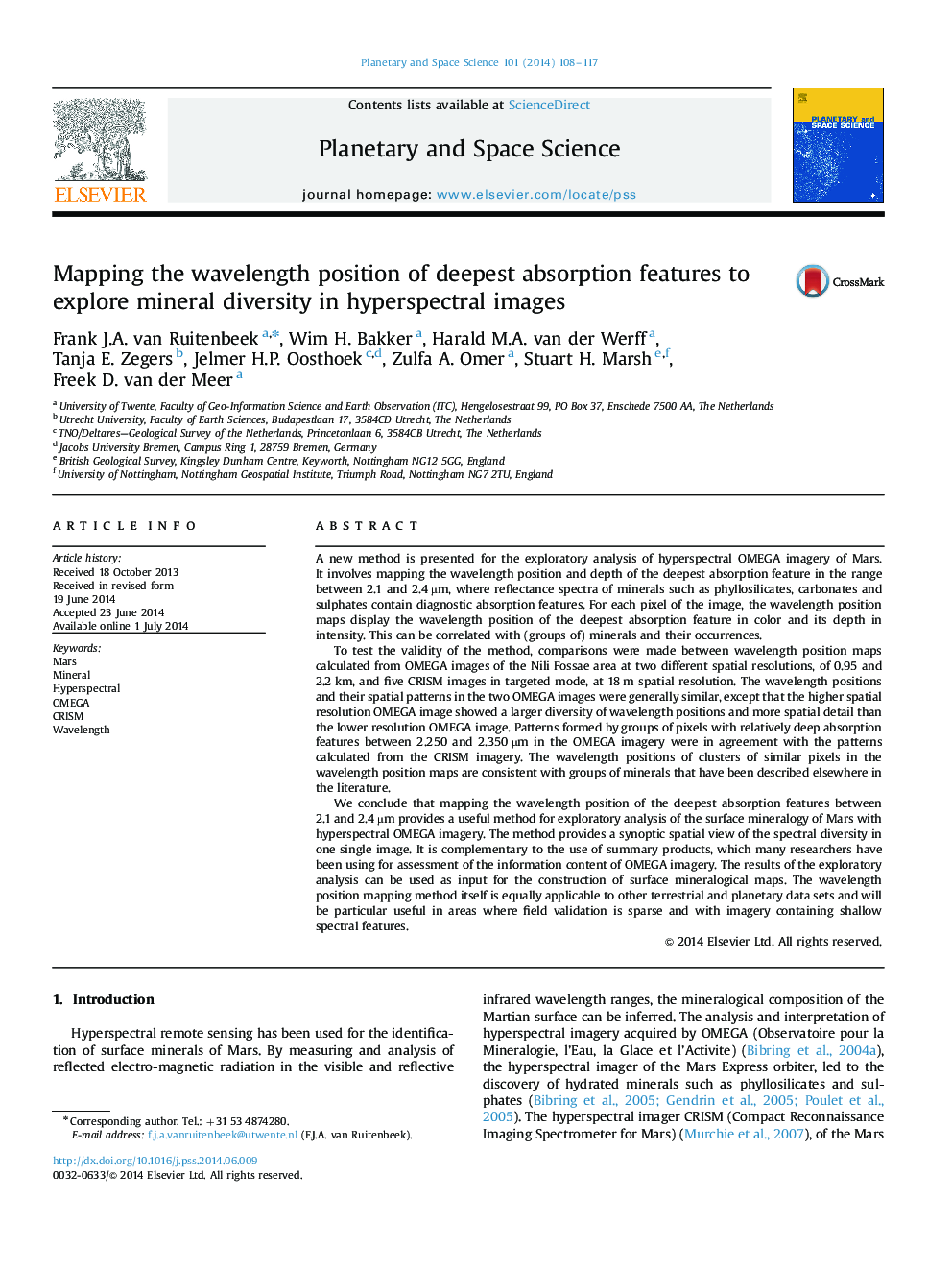| کد مقاله | کد نشریه | سال انتشار | مقاله انگلیسی | نسخه تمام متن |
|---|---|---|---|---|
| 1781085 | 1523936 | 2014 | 10 صفحه PDF | دانلود رایگان |
• A new method is presented for exploring mineral diversity in hyperspectral images.
• The method calculates the wavelength position of deepest absorption features.
• The absorption features of image spectra between 2.1 and 2.4 μm were mapped.
• Resulting wavelength position maps show spatial distributions of (groups of) minerals.
• Results can be used to assess the surface mineralogy of Mars.
A new method is presented for the exploratory analysis of hyperspectral OMEGA imagery of Mars. It involves mapping the wavelength position and depth of the deepest absorption feature in the range between 2.1 and 2.4 µm, where reflectance spectra of minerals such as phyllosilicates, carbonates and sulphates contain diagnostic absorption features. For each pixel of the image, the wavelength position maps display the wavelength position of the deepest absorption feature in color and its depth in intensity. This can be correlated with (groups of) minerals and their occurrences.To test the validity of the method, comparisons were made between wavelength position maps calculated from OMEGA images of the Nili Fossae area at two different spatial resolutions, of 0.95 and 2.2 km, and five CRISM images in targeted mode, at 18 m spatial resolution. The wavelength positions and their spatial patterns in the two OMEGA images were generally similar, except that the higher spatial resolution OMEGA image showed a larger diversity of wavelength positions and more spatial detail than the lower resolution OMEGA image. Patterns formed by groups of pixels with relatively deep absorption features between 2.250 and 2.350 µm in the OMEGA imagery were in agreement with the patterns calculated from the CRISM imagery. The wavelength positions of clusters of similar pixels in the wavelength position maps are consistent with groups of minerals that have been described elsewhere in the literature.We conclude that mapping the wavelength position of the deepest absorption features between 2.1 and 2.4 µm provides a useful method for exploratory analysis of the surface mineralogy of Mars with hyperspectral OMEGA imagery. The method provides a synoptic spatial view of the spectral diversity in one single image. It is complementary to the use of summary products, which many researchers have been using for assessment of the information content of OMEGA imagery. The results of the exploratory analysis can be used as input for the construction of surface mineralogical maps. The wavelength position mapping method itself is equally applicable to other terrestrial and planetary data sets and will be particular useful in areas where field validation is sparse and with imagery containing shallow spectral features.
Journal: Planetary and Space Science - Volume 101, 15 October 2014, Pages 108–117
